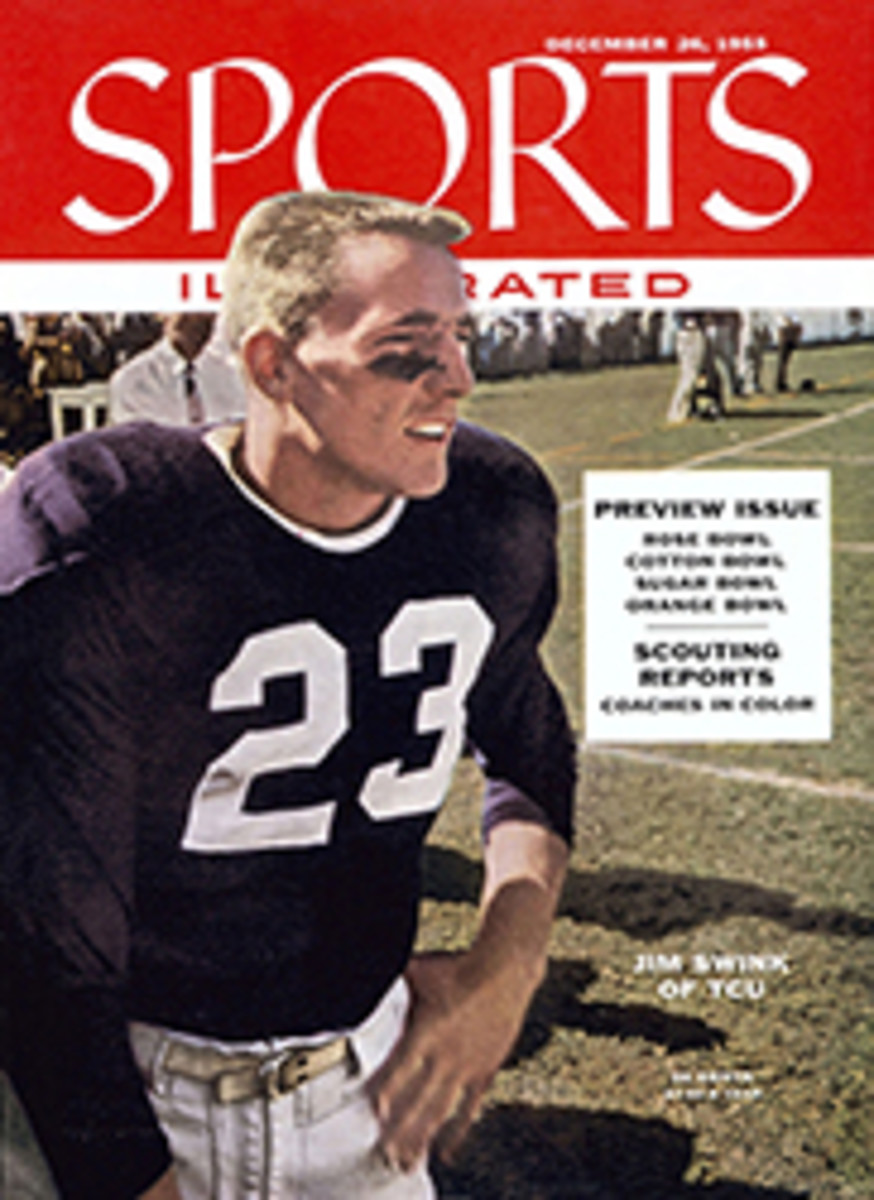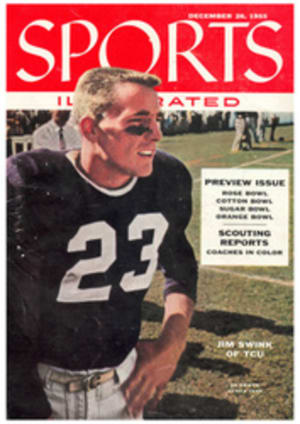
NASHUA IS SOLD BY MAIL
At the edge of a rolling, blue-grass paddock out-side Lexington, Kentucky last Friday morning a 3-year-old bay colt and his new owner were officially introduced to each other. The colt reached over the bars and tentatively nibbled at the man's camel's hair overcoat. Leslie Combs II, master of Spendthrift Farm, wore the expression of a man who, with four friends, has just paid $1,251,200 for a single piece of horseflesh.
Was Combs ready to name his partners? He was not, Combs explained. "My friends said, 'Don't mention our names. Just let everybody think you're the damn fool, not us, payin' that much for a horse.' "
But Leslie Combs, surprise winner in a tense, sealed-bid auction for Nashua, did have some other answers for an eager world. Combs's first act after hearing he had won was to phone to Florida for a talk with Sunny Jim Fitzsimmons, the veteran who trained Nashua for the late Bill Woodward. Mr. Fitz had agreed to carry on. Nashua, some 200 pounds heavier from paddock living, would be shipped to Florida in a day or two to begin training for Hialeah's winter handicap classics in the orange and blue colors of Leslie Combs instead of the white-and-red polka dots of Belair. In Miami, Sunny Jim happily tacked up Nashua's name on a waiting stall. "We'll give him Christmas Day off," he said, "then put him to work."
Combs did not seem to know what the chances would be of making the trip to California for the Santa Anita Handicap on February 25: "It's all up to Mr. Fitz." Knowing Mr. Fitz's aversion to long-distance traveling for one race, horsemen could expect Nashua to stay in Florida. This, of course, would eliminate the possibility of another Nashua-Swaps meeting this winter unless Rex Ellsworth should decide to ship Swaps to Florida.
"I changed my bid three times," Leslie Combs said. "I didn't sleep much the night before the envelopes were opened, but I did have a feeling we were going to get him. I figured he's worth $800,000 to $1 million as a sire and we might win as much as $300,000 with him as a 4-year-old."
There, for the moment, stands the serial story of the most celebrated 3-year-old in the world: 1955's headlined Horse of the Year who has just won for the Woodward heirs the price of all time. (Up to last week the top price was the $700,000 paid by the Irish National Stud for Tulyar in 1952.) The transaction lacked the particular drama of the standard horse auction, with an auctioneer (who gets 5%) deftly encouraging higher and higher bids. But the sealed-bid affair designed by Woodward Executor John W. Ludewig and New York's Hanover Bank was an unprecedented drama of its own. Under the terms of sale (see right) the Thoroughbreds were offered in four groups. Nashua was Group A all by himself; the rest of the racing stock (which went for something like $200,000) was Group B, the brood mares and weanlings (who fetched $400,000 or so) Group C. Under Group D the executors offered the whole packet but no Group D bid equaled the aggregate of the others. Horsemen had a chance to examine a vet's certificate of Nashua's general well-being—along with a careful caveat pointing out that no examination of Nashua's fertility has ever been made.
Leslie Combs, a 54-year-old Kentucky horseman who played left end on the immortal 1921 Centre College squad that upset Harvard, now finds himself with jammed telephone lines. As soon as the sale was announced the three wires into white-pillared Spendthrift Farm flooded with calls, many of them from horse-business acquaintances saying: "I want in on the horse."
Talking in a ham-gravy-and-grits accent, Combs spread the charm for which he is noted among his friends—even to a woman, a complete stranger, who called from California asking money for an old men's home. He sympathized with her cause but explained: "Honey, my wife has all the money and won't let me have even a little bit."
Combs is a veteran at the purchase and syndication of Thoroughbred sires. He has lavished $5 million of his own and other people's money for stallion material in this country, England, France, Ireland and Australia. His first venture was a disaster when he bought an old stallion named Beau Pere from Louis B. Mayer for $100,000 and the animal died, chiefly of old age, before he could service a single mare. "Supposing I'd owned all of him!" Combs recalls with horror. "As it was, Mr. Mayer was so nice about it. He saw that I got Alibhai."
Since then he has cut up the ownership of half a dozen other distinguished sires, including Shannon, Jet Pilot and Royal Charger—the latter being the first ever to command a $10,000 stud fee.
"I think Nashua can win a lot of money," he says. "He's probably the greatest horse we've had around in many a year. He's like Man o' War—he can run all day, sprint, come from behind, do anything." What, when he is retired, will Nashua's stud fee be? "At least $10,000," says Leslie Combs with a faraway look in his eye.
It should perhaps be explained that Spendthrift Farm is named for a horse once owned by his grandfather—a highly successful horse in his day, too—not for any real rashness in Mr. Combs's temperament.
PHOTO
BELAIR STUD'S GREAT 3-YEAR-OLD, FOR WHOM NEW OWNERS BID $1,251,200, SURVEYS THE WORLD FROM HIS BLUEGRASS PADDOCK
PHOTO
LESLIE COMBS II
PHOTO
HANOVER BANK OFFERS A HORSE

